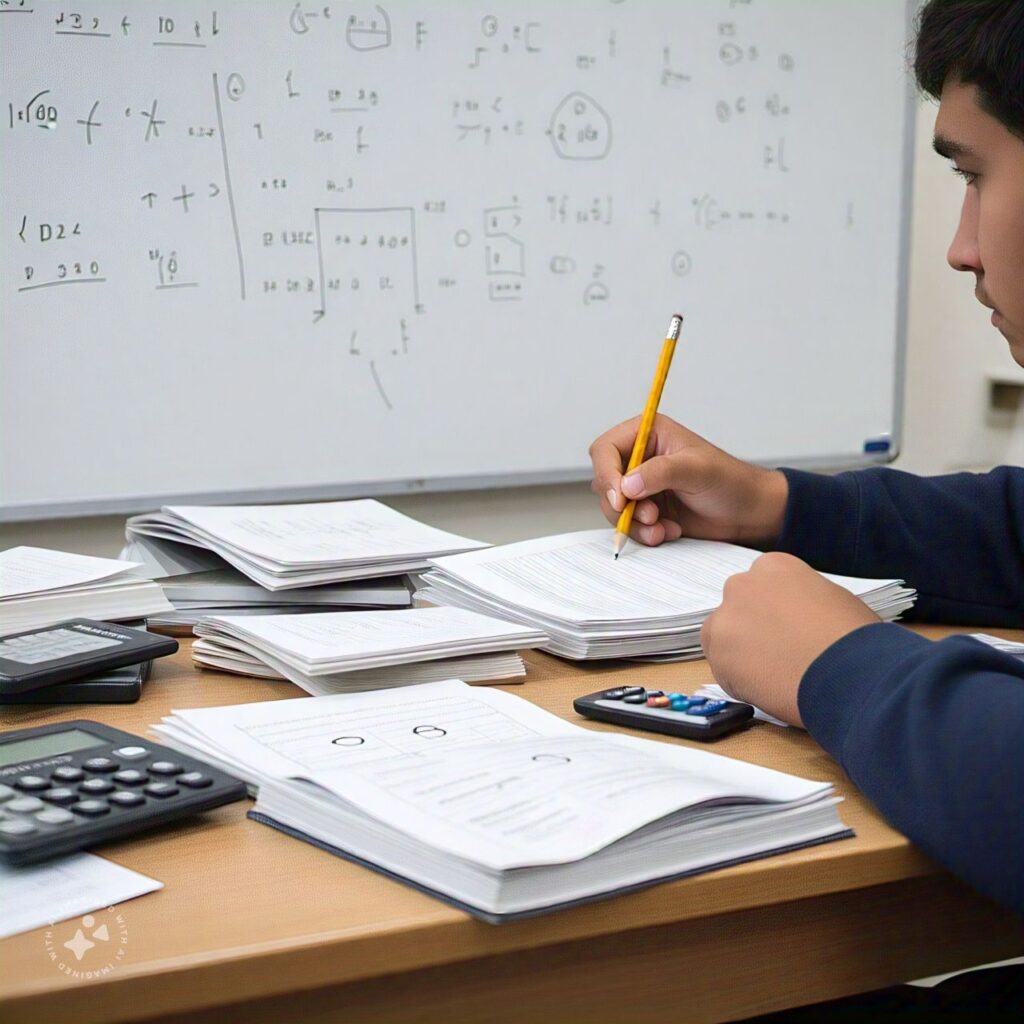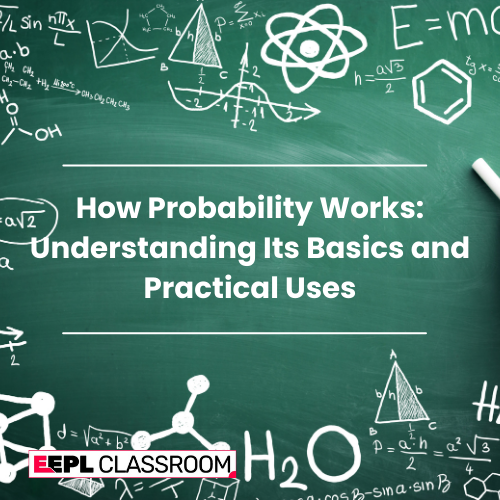Probability is a branch of mathematics that deals with the likelihood of an event happening. It is all around us, from predicting the weather to games and even finance. Understanding probability helps us make informed decisions based on possible outcomes.
What is Probability?
Probability measures how likely an event is to happen. It is a number between 0 and 1. If an event has a probability of 0, it will never happen. If it has a probability of 1, it is certain to happen. For example, when you flip a fair coin, there are two possible outcomes: heads or tails. The probability of getting heads is 1/2, and so is the probability of getting tails.
Mathematically, probability is defined as:Probability of an event=Number of favorable outcomesTotal number of possible outcomes\text{Probability of an event} = \frac{\text{Number of favorable outcomes}}{\text{Total number of possible outcomes}}Probability of an event=Total number of possible outcomesNumber of favorable outcomes
Types of Probability
- Theoretical Probability: This is based on reasoning and calculations. It assumes that all outcomes are equally likely. For example, when you roll a fair die, the theoretical probability of rolling a 3 is 1/6 because there are six equally likely outcomes.
- Experimental Probability: This is based on actual experiments or trials. It is determined by conducting experiments and recording the outcomes. For example, if you flip a coin 100 times and get heads 60 times, the experimental probability of getting heads is 60/100 or 0.6.
- Subjective Probability: This is based on personal judgment or experience. For example, you might say that the probability of your favorite team winning the match is 0.8 based on their performance.
Key Terms in Probability
- Outcome: The result of an experiment or trial. For example, getting a 5 when rolling a die.
- Event: A specific outcome or a set of outcomes. For example, rolling an even number on a die (2, 4, or 6).
- Sample Space: The set of all possible outcomes of an experiment. For example, the sample space for a coin flip is {Heads, Tails}.
- Favorable Outcome: The outcome that we are interested in. For example, when rolling a die, a favorable outcome for getting a 4 is rolling a 4.

How Probability Works in Daily Life
Probability is more than just a mathematical concept. It plays a key role in many areas of life:
- Weather Forecasting: Meteorologists use probability to predict the weather. They use data and models to estimate the likelihood of events like rain, snow, or sunny weather.
- Games of Chance: When you play games like cards or dice, you are using probability. For example, in a deck of cards, the probability of drawing a red card is 26/52 or 1/2.
- Insurance: Insurance companies use probability to assess risk. They predict the likelihood of certain events happening, like accidents or health issues, and use this information to set premiums.
- Medicine: Doctors use probability to diagnose illnesses. Based on the probability of symptoms and test results, they can make informed decisions about treatment.
The Importance of Probability
- In Decision Making: Probability helps in making better decisions by understanding possible outcomes. For example, if you are deciding whether to take an umbrella, knowing the probability of rain can guide your decision.
- In Risk Assessment: Probability is essential in assessing risk. Finance, businesses use probability to forecast market trends and make investment decisions. In medicine, it helps in determining the chances of a patient recovering based on test results.
- In Sports: Athletes and coaches use probability to improve their performance. For example, a coach may calculate the probability of winning a game based on past performance, players’ statistics, and other factors.
- In Technology: Probability is used in algorithms, artificial intelligence, and machine learning. For example, recommendation systems, like those used by Netflix and YouTube, use probability to predict what you might want to watch next.
Real-World Examples
Let’s take a few real-world examples to understand how probability works in different situations:
- Coin Toss: The probability of getting heads in a fair coin toss is 1/2. This means, if you flip the coin 100 times, you would expect to get heads about 50 times. However, this can vary in any short sequence of flips.
- Rolling a Die: A fair die has 6 sides, so the probability of rolling any one number is 1/6. If you want to know the probability of rolling an even number, you have three favorable outcomes (2, 4, 6), so the probability is 3/6 or 1/2.
- Drawing a Card: A standard deck of cards has 52 cards, with 13 of each suit. If you want the probability of drawing a heart, there are 13 hearts in the deck. So, the probability of drawing a heart is 13/52 or 1/4.
- Weather Forecast: If the forecast says there is a 70% chance of rain tomorrow, the probability of rain is 0.7. This means that, in similar conditions, it rains 7 times out of 10.
Conclusion
Probability is more than just a topic in mathematics. It helps us make better decisions, assess risks, and understand the world around us. Whether it’s in games, weather forecasts, or business, probability is a tool we use daily, often without even realizing it. By understanding the basics of probability, we can make more informed choices and prepare for different outcomes.
Understanding probability opens up a new way of thinking, where we see the world as a collection of possible outcomes, each with its own likelihood. So next time you face a choice, remember: probability might just be the key to making the best decision!
Read Our Latest Blog
How to Choose the Right Stream in Class 11: A Complete Guide
Phone Number: +91-7488456170
Email ID: abhishek@eepl.me
Our Platforms:
Digilearn Cloud
EEPL Test
Live Emancipation
Follow Us on Social Media:
Instagram – EEPL Classroom
Facebook – EEPL Classroom
Stay connected and keep learning with EEPL Classroom!











